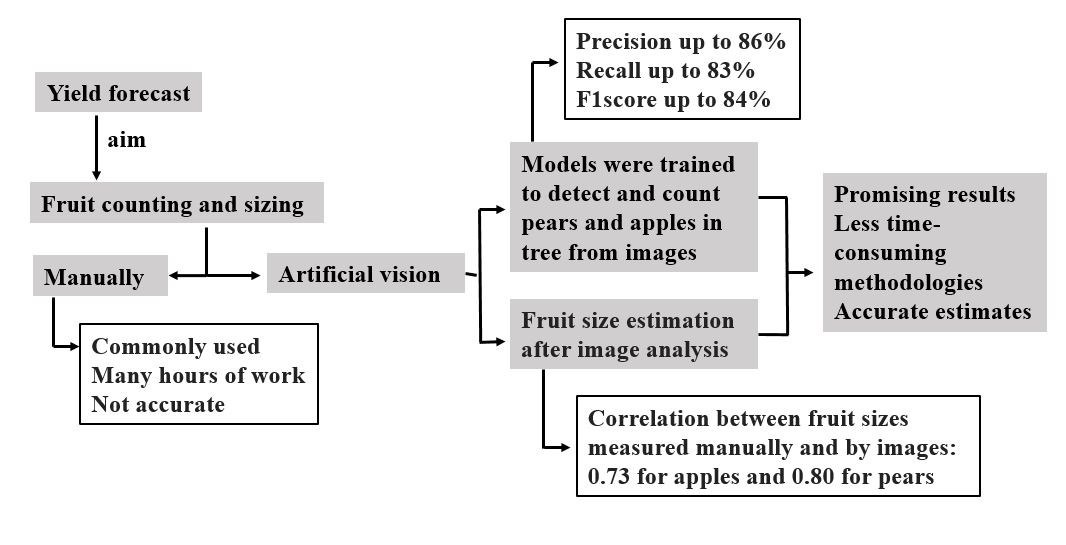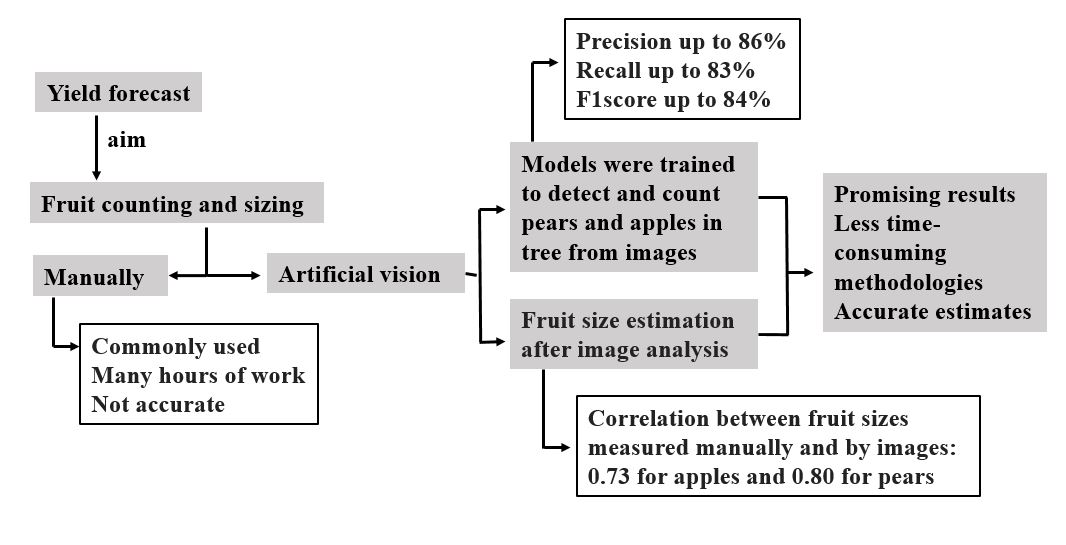Apple (Malus domestica) and pear (Pyrus communis) yield prediction after tree image analysis
DOI:
https://doi.org/10.48162/rev.39.104Palabras clave:
detección de frutos, visión artificial, predicción de cosecha, Malus domestica, Pyrus communisResumen

Yield forecasting depends on accurate tree fruit counts and mean size estimation. This information is generally obtained manually, requiring many hours of work. Artificial vision emerges as an interesting alternative to obtaining more information in less time. This study aimed to test and train YOLO pre-trained models based on neural networks for the detection and count of pears and apples on trees after image analysis; while also estimating fruit size. Images of trees were taken during the day and at night in apple and pear trees while fruits were manually counted. Trained models were evaluated according to recall, precision and F1score. The correlation between detected and counted fruits was calculated while fruit size estimation was made after drawing straight lines on each fruit and using reference elements. The precision, recall and F1score achieved by the models were up to 0.86, 0.83 and 0.84, respectively. Correlation coefficients between fruit sizes measured manually and by images were 0.73 for apples and 0.80 for pears. The proposed methodologies showed promising results, allowing forecasters to make less time consuming and accurate estimates compared to manual measurements.
Highlights:
- The number of fruits in apple and pear trees, could be estimated from images with promising results.
- The possibility of estimating the fruit numbers from images could reduce the time spent on this task, and above all, the costs. This allow growers to increase the number of trees sampled to make yield forecasts.
Descargas

Descargas
Publicado
Cómo citar
Número
Sección
Licencia
Derechos de autor 2018 Revista de la Facultad de Ciencias Agrarias UNCuyo

Esta obra está bajo una licencia internacional Creative Commons Reconocimiento-NoComercial-CompartirIgual 3.0.
Aquellos autores/as que tengan publicaciones con esta revista, aceptan las Políticas Editoriales.










.jpg)




